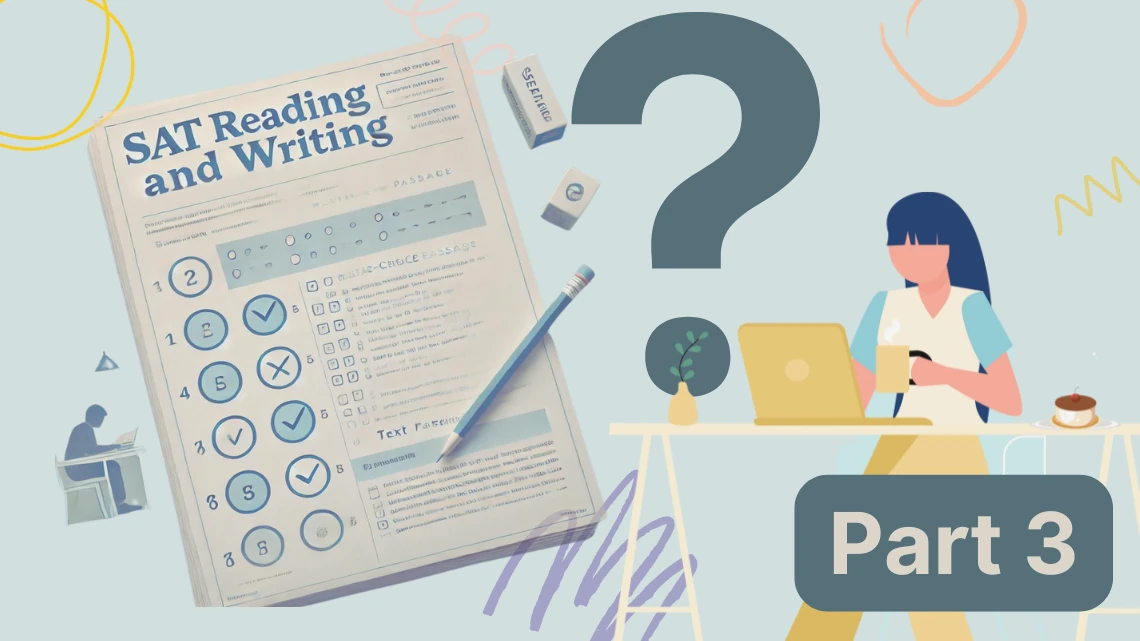Mastering the “Half Right” Elimination Strategy for the Digital SAT Reading & Writing Section
In our ongoing series on the First Principles of Elimination for the Digital SAT Reading & Writing section, we’ve already covered essential strategies like Extreme Language and Recycled Language. Now, in Part 3, we explore a subtle but critical trap known as Half Right. This strategy focuses on eliminating answer choices that seem correct at first but are only partially accurate.
Understanding the “Half Right” Trap in SAT Questions
The Half Right trap is one of the most deceptive answer types on the SAT. These answers contain a mix of correct and incorrect information, which makes them appear plausible. However, remember that the SAT requires every part of an answer choice to be correct. If even one small part is wrong, the whole answer is incorrect and must be eliminated.
The challenge with Half Right answers is that they often lure you in by correctly addressing part of the question or passage, while subtly introducing information that either wasn’t mentioned or directly contradicts the text. Identifying and eliminating these tricky answers requires careful reading and attention to detail.
Why Half Right Answers Are Deceptive
Half Right answers play on your confidence. When under time pressure, it’s easy to spot a correct part of an answer and rush to select it without fully evaluating the rest of the choice. However, be careful of selecting an answer choice without first reading each phrase carefully. The key is to train yourself to scrutinize every word of the answer and ask, “Is every part of this statement fully supported by the passage?”
Applying the Half Right Strategy: A Sample SAT Question
Passage:
The field of epidemiology has long been used to study the patterns, causes, and effects of health and disease conditions in defined populations. In the 20th century, epidemiology helped control diseases such as smallpox and polio through extensive vaccine programs. However, in the 21st century, it is increasingly being applied to non-communicable diseases such as cancer and heart disease, which have complex, multifactorial causes.
Question:
What choice best describes the main idea of the passage?
A. Epidemiology has primarily been used to study communicable diseases, and it continues to do so in the 21st century.
B. The field of epidemiology is shifting its focus from communicable to non-communicable diseases in the 21st century.
C. Epidemiology has been equally focused on communicable and non-communicable diseases since the 20th century.
D. The main purpose of epidemiology is to control non-communicable diseases through extensive vaccine programs.
Detailed Explanation of Each Answer Choice
Choice A – This is a Half Right answer. While it’s true that epidemiology has been used to study communicable diseases, the second part of the answer is incorrect. The passage clearly states that epidemiology is shifting its focus in the 21st century to non-communicable diseases. Therefore, Choice A is incorrect.
Choice B – This is the correct answer. The passage states that epidemiology is being increasingly applied to non-communicable diseases in the 21st century. Choice B accurately reflects the passage without introducing incorrect details.
Choice C – This is another example of a Half Right answer. The first part seems plausible, but the passage doesn’t say that epidemiology has been equally focused on both types of diseases since the 20th century. The shift to non-communicable diseases is a more recent development. Thus, Choice C is incorrect.
Choice D – This answer incorrectly suggests that epidemiology’s main purpose is to control non-communicable diseases through vaccines. The passage only mentions vaccines in the context of communicable diseases like smallpox and polio. Choice D is irrelevant.
How to Spot and Avoid Half Right Answer Choices
To avoid falling into the Half Right trap, keep these key tips in mind:
- Evaluate each part of the answer: Break down each answer choice into parts and verify that every piece of information is supported by the passage.
- Don’t rush: If part of the answer seems right, take the time to evaluate the rest of the answer before committing.
- Look for subtle contradictions: Often, Half Right answers will sneak in a small contradiction or a detail that slightly alters the meaning of the correct information.
By practicing this approach, you’ll be able to spot and eliminate Half Right answers more effectively and improve your performance on the Digital SAT Reading & Writing section.
Conclusion: Master the Half Right Strategy to Excel on the SAT
The Half Right strategy is a powerful tool for eliminating deceptive answer choices on the SAT. By learning to spot these tricky answers, you can significantly improve your accuracy and boost your overall SAT score. At MentoMind, we provide students with comprehensive strategies and practice questions designed to sharpen their SAT skills.
Ready to ace the SAT? Explore MentoMind, where you can access thousands of practice questions, full-length digital SAT tests, and personalized study tips and tricks from our AI chatbot. Start your SAT prep with us today!
Essential SAT Strategies You Shouldn’t Miss:
- ICE Method: The Ultimate Guide to Mastering the Digital SAT Reading & Writing Section – Elimination Strategies (Part 1)
- Recycled Language: The Ultimate Guide to Mastering the Digital SAT Reading & Writing Section – Elimination Strategies (Part 2)
- Could Be True: The Ultimate Guide to Mastering the Digital SAT Reading & Writing Section – Elimination Strategies (Part 4)



